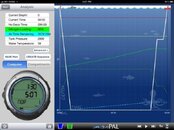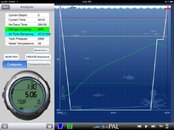djensen
Registered
Hi,
A buddy and I are having a friendly debate. If we're making two dives in a day, one on Nitrox and one on air, does it matter which gas is used first? For example: Let's do our first dive to, say, 70 feet. I'll use Nitrox on that dive. After an adequate surface interval, we dive again - this time on air to 50 feet. Any advantage to breath the gases in this order (as opposed to diving air first and Nitrox second)?
I took the position that using the Nitrox on the deeper dive is more beneficial as we'll accumulate less nitrogen while under the greater pressure. My bud says using Nitrox on the second dive may be better as it makes your second dive safer (because we're at a higher pressure group on the second dive).
Intuitively it seems that it wouldn't matter much as you either front load the nitrogen or you back load it. Either way, you'll have the same amount of nitrogen in your system at the end of the day, right? Let's assume that we're diving within all limits and our surface interval is adequate to do a nice second dive.
There's a beer riding on this, so it's pretty important... ha ha
A buddy and I are having a friendly debate. If we're making two dives in a day, one on Nitrox and one on air, does it matter which gas is used first? For example: Let's do our first dive to, say, 70 feet. I'll use Nitrox on that dive. After an adequate surface interval, we dive again - this time on air to 50 feet. Any advantage to breath the gases in this order (as opposed to diving air first and Nitrox second)?
I took the position that using the Nitrox on the deeper dive is more beneficial as we'll accumulate less nitrogen while under the greater pressure. My bud says using Nitrox on the second dive may be better as it makes your second dive safer (because we're at a higher pressure group on the second dive).
Intuitively it seems that it wouldn't matter much as you either front load the nitrogen or you back load it. Either way, you'll have the same amount of nitrogen in your system at the end of the day, right? Let's assume that we're diving within all limits and our surface interval is adequate to do a nice second dive.
There's a beer riding on this, so it's pretty important... ha ha





